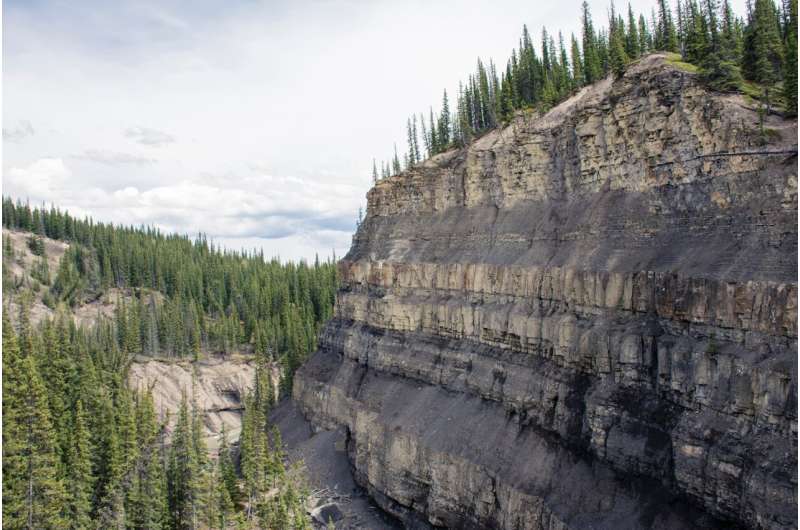New theory connects tree uprooting and sediment movement

The critical zone is Earth's outer skin, the space between treetops and bedrock. The critical zone is a community comprising rock, water, soil, air, and the flora and fauna that live on Earth's surface. As floods, landslides, and other geologic hazards shape landscapes, they transform the critical zone and the life-giving processes that support ecosystems.
One often overlooked but consequential process that shapes the critical zone is tree throw, also known as windthrow, which typically occurs during intense wind or ice storms. When a tree falls on a hillside, it carries with it the soil attached to its roots. The dislodged substrate eventually migrates downhill, contributes to erosion, and leaves behind pit and mound shapes on the surface.
Researchers have typically relied on field measurements that quantify the amount of soil on the roots to measure sediment displacement from tree throw. Using that knowledge, they can then extrapolate across a landscape using the volume of measured soil combined with known storms. However, because extreme weather events are relatively rare, it is difficult to capture the full extent of the impact that sediment displacement from tree throw can have without a long historical record or an expansive study area.
In a new paper, Doane et al. develop a theory that connects tree uprooting, hillslope sediment transport, and topographic roughness. It is the first theory to address surface roughness from tree throw. The authors believe it can serve as a foundation for quantifying the impacts of tree throw across a landscape.
The authors demonstrated their concept using Brown County in southern Indiana as a case study. In the study area, tree throw accounts for 11%–18% of hillslope sediment change. In addition, the research revealed that east facing hills have more frequent tree throw events, aligning with dominant wind patterns.
The findings of this study suggest how extreme wind events can shape terrain by uprooting trees. By using high-resolution topographic data, the approach can help constrain sediment production from tree throw across large landscapes. Furthermore, the theory can help clarify critical zone processes across extensive areas, the authors note.
More information: Tyler H. Doane et al, Topographic Roughness on Forested Hillslopes: A Theoretical Approach for Quantifying Hillslope Sediment Flux From Tree Throw, Geophysical Research Letters (2021). DOI: 10.1029/2021GL094987
Journal information: Geophysical Research Letters
Provided by American Geophysical Union
This story is republished courtesy of Eos, hosted by the American Geophysical Union. Read the original story here.





















